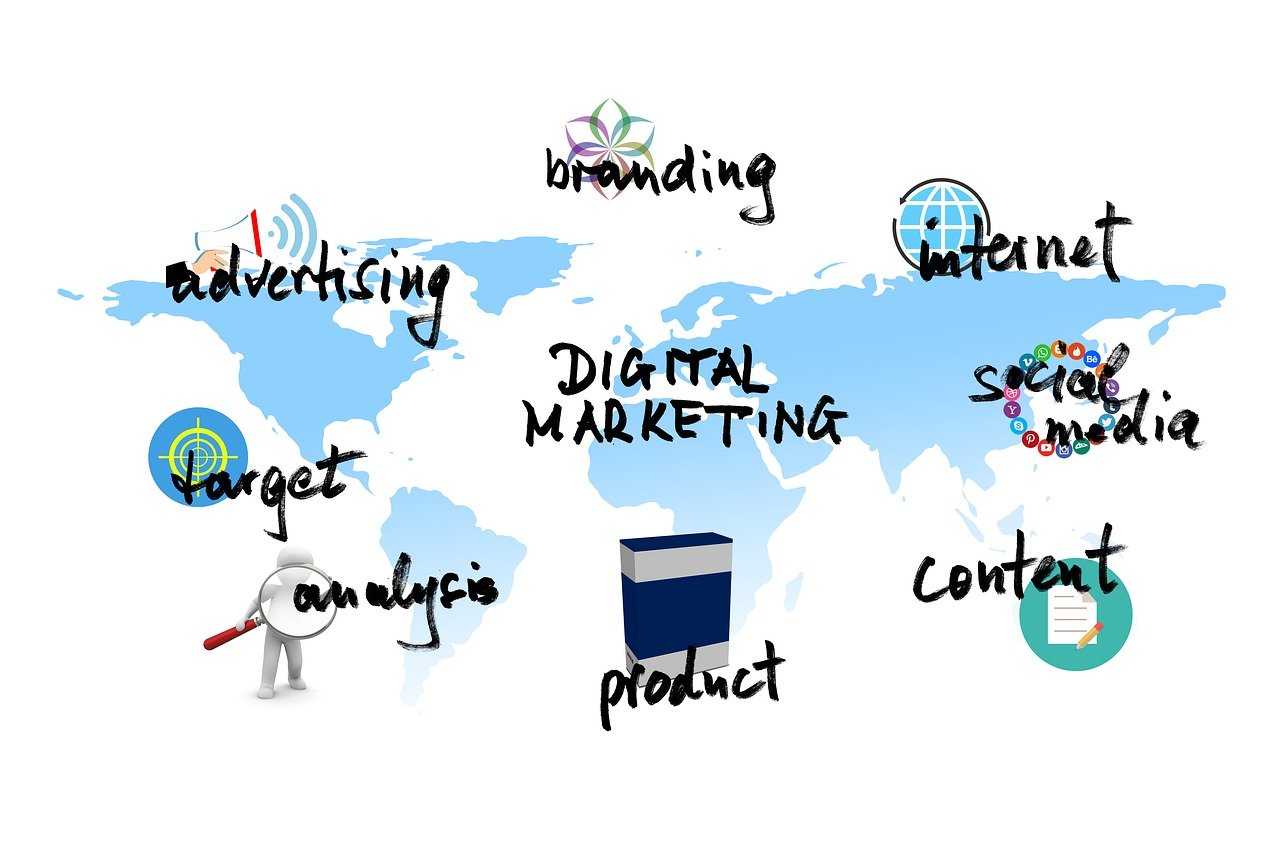In today’s fast-paced digital world, the term “digital marketing” is often thrown around, but what does it really mean? If you’re new to the concept or looking to understand it better, you’re in the right place. Digital marketing is all about promoting your business or brand using online channels. From social media and search engines to email and websites, it’s a vast landscape with endless possibilities. In this beginner-friendly guide, we’ll break down the essentials of digital marketing,
Why Digital Marketing Matters
- Digital marketing is essentially any form of marketing that involves electronic devices and the internet.
- It encompasses a wide range of tactics and strategies aimed at promoting products or services to a target audience.
- Unlike traditional marketing, which relies on offline channels like print ads and billboards, digital marketing leverages online platforms such as search engines, social media, email, and websites to connect with potential customers.

What is Digital Marketing?
In today’s digital age, where virtually everyone is online, digital marketing has become essential for businesses of all sizes. Here’s why it matters
1. Reach
With over 4.6 billion internet users worldwide, digital marketing offers unparalleled reach, allowing businesses to connect with a global audience regardless of geographical boundaries.
2. Targeting
Digital marketing platforms provide advanced targeting options, enabling businesses to reach specific demographics, interests, and behaviors with precision, resulting in higher engagement and conversion rates.
3. Cost-Effectiveness
Compared to traditional marketing channels, digital marketing can be more cost-effective, making it accessible to businesses with limited budgets.
4. Measurability
Digital marketing provides detailed analytics and reporting tools, allowing businesses to track the performance of their campaigns in real-time and make data-driven decisions to optimize their strategies.
5. Engagement
Digital marketing fosters direct engagement with customers through interactive content, social media interactions, and personalized messaging, building stronger relationships and brand loyalty.

Exploring Digital Marketing Channels
Digital marketing encompasses a variety of channels and tactics, each serving a specific purpose in reaching and engaging target audiences. Here are some of the most common digital marketing channels
1. Search Engine Optimization (SEO)
SEO involves optimizing a website’s content and structure to improve its visibility in search engine results, driving organic traffic and increasing online visibility.
2. Social Media Marketing
Social media platforms like Facebook, Instagram, Twitter, and LinkedIn are powerful tools for building brand awareness, engaging with customers, and driving website traffic through organic and paid content.
3. Content Marketing
Content marketing focuses on creating and distributing valuable, relevant content to attract and retain a target audience, driving engagement and building brand authority.
4. Email Marketing
Email marketing involves sending targeted, personalized emails to subscribers to nurture leads, promote products or services, and maintain customer relationships, resulting in higher conversion rates and customer retention.
5. Pay-Per-Click (PPC) Advertising
PPC advertising allows businesses to display ads on search engines and social media platforms and pay a fee each time a user clicks on their ad, driving targeted traffic and increasing conversions.
6. Influencer Marketing
Influencer marketing involves partnering with influential individuals on social media to promote products or services, leveraging their credibility and reach to reach a wider audience and drive sales.

Getting Started with Digital Marketing
Ready to dip your toes into the digital marketing waters? Here are some steps to help you get started
1. Define Your Goals
Start by defining your business goals and objectives for digital marketing. Whether it’s increasing brand awareness, generating leads, or driving sales, having clear goals will guide your strategy.
2. Know Your Audience
Understand your target audience’s demographics, interests, and online behavior to create targeted and relevant content that resonates with them.
3. Choose the Right Channels
Identify the digital marketing channels that are most relevant to your audience and align with your business goals. Focus your efforts on those channels to maximize your impact.
4. Create Compelling Content
Invest in creating high-quality, valuable content that educates, entertains, or solves problems for your audience, establishing your brand as a trusted authority in your industry.
5. Monitor and Measure
Track the performance of your digital marketing campaigns using analytics tools and key performance indicators (KPIs). Analyze the data to understand what’s working and what isn’t, and make adjustments to optimize your results over time.

Conclusion
Digital marketing may seem daunting at first, but with the right knowledge and strategy, it can be a powerful tool for growing your business and reaching your target audience online. By understanding the basics of digital marketing and implementing effective strategies, you can establish a strong online presence, build brand credibility, and drive business growth in the digital age. So, embrace the opportunities that digital marketing offers, experiment with different channels and tactics, and watch your business thrive in the digital world.